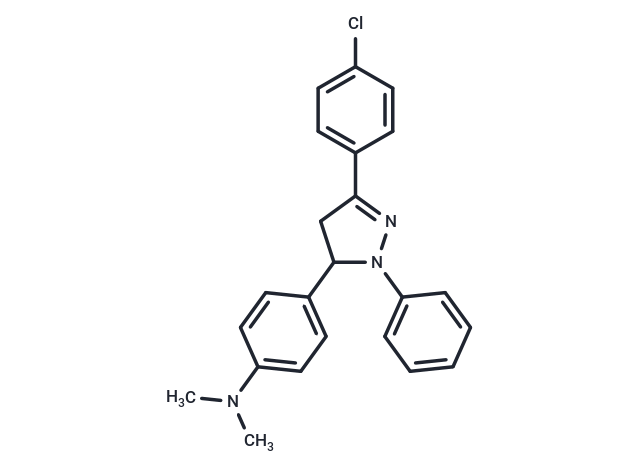Shopping Cart
- Remove All
 Your shopping cart is currently empty
Your shopping cart is currently empty

Anticanceragent 231 (compound P5) is a tyrosine kinase inhibitor with an IC50 value of 3.95 μM. It targets the EGFR-ERK1/2 signaling pathway, reducing cell viability, proliferation, migration, and cancer stemness in triple-negative breast cancer (TNBC) cells, potentially playing a significant role in the treatment of TNBC.

| Pack Size | Price | Availability | Quantity |
|---|---|---|---|
| 10 mg | Inquiry | 10-14 weeks | |
| 50 mg | Inquiry | 10-14 weeks |
| Description | Anticanceragent 231 (compound P5) is a tyrosine kinase inhibitor with an IC50 value of 3.95 μM. It targets the EGFR-ERK1/2 signaling pathway, reducing cell viability, proliferation, migration, and cancer stemness in triple-negative breast cancer (TNBC) cells, potentially playing a significant role in the treatment of TNBC. |
| In vitro | Anticancer agent 231 (compound P5) exhibits notable cytotoxic effects and impairs the viability of TNBC cells. It reduces the proliferation of Hs578T and MDA MB 231 cells at concentrations of 1, 2, and 4 μM over periods of 14 and 8 days. Furthermore, at doses of 1, 2, and 4 μM for 12 hours, this agent diminishes the migratory abilities of Hs578T cells. At concentrations of 1 and 2 μM, it inhibits tumor stemness and enhances the sensitivity of TNBC cells to paclitaxel. Lastly, Anticancer agent 231 targets the EGFR-ERK 1/2 axis to inhibit TNBC cells at two dosing ranges, 1, 2, 4 μM and 5, 10, 20 μM. |
| Molecular Weight | 375.89 |
| Formula | C23H22ClN3 |
| Cas No. | 128519-30-2 |
| Storage | Powder: -20°C for 3 years | In solvent: -80°C for 1 year | Shipping with blue ice. |

Copyright © 2015-2025 TargetMol Chemicals Inc. All Rights Reserved.